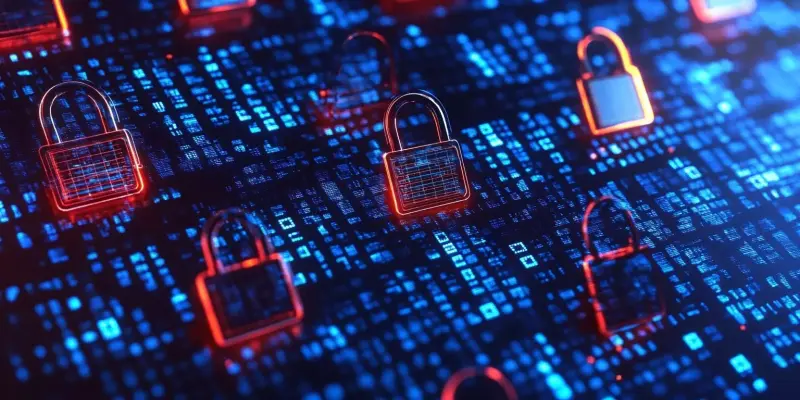The urgency of securing our nation’s digital infrastructure has never been more pressing, with a recent report by Censys revealing that over 430 industrial control systems, essential for vital services, are directly accessible via the Internet, creating significant security risks. The potential for AI-enabled cyberattacks further exacerbates the situation, highlighting the critical need for immediate and comprehensive action. Addressing these digital vulnerabilities requires a fundamental shift in our approach to security, ensuring that the protection of cyberspace is prioritized alongside traditional physical defenses.
The Pressing Need for a Cybersecurity Revolution
Traditional Focus on Physical Borders is Now Obsolete
Historically, national defense strategies have emphasized the protection of physical borders, but this approach is increasingly inadequate in the face of cyber threats that transcend geographical boundaries. As the digital realm has no physical borders, the traditional methods of securing a nation’s safety must be reevaluated and transformed. This paradigm shift necessitates a holistic approach that encompasses both physical and digital security measures, recognizing that the two are inherently interlinked.
A unified response is essential across all sectors of society, ensuring that robust cybersecurity measures are implemented throughout supply chains and technology networks. A collaborative effort guided by shared principles can create a resilient security posture capable of defending against the multifaceted nature of modern cyber threats. The intertwined nature of digital and physical infrastructures means that a breach in one can significantly impact the other, emphasizing the importance of an integrated defense strategy.
Strong Collaborations Are Essential
To address the vulnerabilities in our digital infrastructure, strong collaborations between public and private sectors are paramount. These partnerships facilitate the sharing of critical information and resources, enhancing the overall security posture. By working together, organizations can develop and implement comprehensive cybersecurity measures that are responsive to emerging threats. This collaboration must extend globally, with nations and international entities participating in the effort to safeguard the digital ecosystem.
Moreover, supply chains and technology networks must be fortified through coordinated efforts, ensuring that every link in the chain adheres to stringent security standards. This approach minimizes the potential for vulnerabilities to be exploited by malicious actors. The incorporation of AI and machine learning technologies can also play a pivotal role in these collaborations, providing advanced threat detection and response capabilities that are crucial for maintaining security in an increasingly complex digital landscape.
AI and Its Impact on Cyber Threats and Defense
The Rise of AI-Enabled Cyberattacks
The advent of artificial intelligence has vastly transformed the cybersecurity landscape, presenting both new challenges and opportunities. AI systems have the capability to generate realistic impersonations and conduct sophisticated swarm attacks, outpacing traditional defense mechanisms. This has necessitated a reassessment of our defense capabilities, with a growing reliance on adversarial training where AI autonomously develops attack and defense strategies.
Addressing AI-generated threats requires the adoption of AI-powered defense systems that can identify and mitigate vulnerabilities in real time. The strategic implications of this shift are profound, echoing the transformative impact of nuclear proliferation on military training and defense systems. Modern defense strategies must evolve to incorporate AI technologies, leveraging their strengths to protect critical digital infrastructure from increasingly sophisticated threats.
AI’s Role in Enhancing Defensive Capabilities
Despite the heightened risks associated with AI-driven cyberattacks, AI also offers potent defensive capabilities that can significantly enhance our security posture. AI technologies can improve threat detection, vulnerability assessment, and cyber intelligence gathering, providing a comprehensive approach to defense. These capabilities are critical for both digital and physical security, enabling a proactive stance against emerging threats.
By integrating AI into our cybersecurity frameworks, we can develop more robust defense mechanisms that are adaptive and responsive to the evolving threat landscape. This integration also necessitates continuous learning and improvement, ensuring that our defenses remain effective against the latest attack vectors. As AI continues to evolve, its potential to bolster our cybersecurity efforts cannot be understated.
Building Trust and Transparency in Cybersecurity
Establishing Transparent Communication Channels
Effective collaboration against cyber threats hinges on the establishment of transparent communication channels among nations, organizations, and individuals. Trust is a fundamental component of successful cybersecurity strategies, enabling the sharing of information and the coordination of defense efforts. By fostering a culture of transparency, stakeholders can work together to identify and address vulnerabilities, enhancing the overall security posture.
Transparent communication also facilitates the development of best practices and standards, ensuring that all participants adhere to rigorous security protocols. This collective effort is crucial for mitigating the risks associated with cyber threats and safeguarding critical digital infrastructure. Establishing trust and transparency in cybersecurity is not just a strategic necessity but also a moral imperative in protecting public safety.
Comprehensive Approach to Cybersecurity and Defense
The urgency to secure our nation’s digital infrastructure has reached a critical point. A recent report by Censys found that over 430 industrial control systems, which are essential for vital services, are directly accessible via the Internet. This exposure creates significant security risks that cannot be ignored. Moreover, the potential for AI-enabled cyberattacks amplifies these risks, stressing the immediate need for comprehensive action.
Addressing these digital vulnerabilities isn’t just about patching holes; it requires a complete change in our approach to security. We need to ensure the protection of our cyberspace is on par with traditional physical defenses. This means investing in robust cyber defenses, adopting advanced technologies, and fostering collaboration between public and private sectors.
Moreover, we must prioritize continuous monitoring, threat detection, and response strategies to safeguard critical infrastructure. Without these measures, the risks to our industries, economy, and national security will continue to grow. It is imperative that we act now to secure our digital future.

